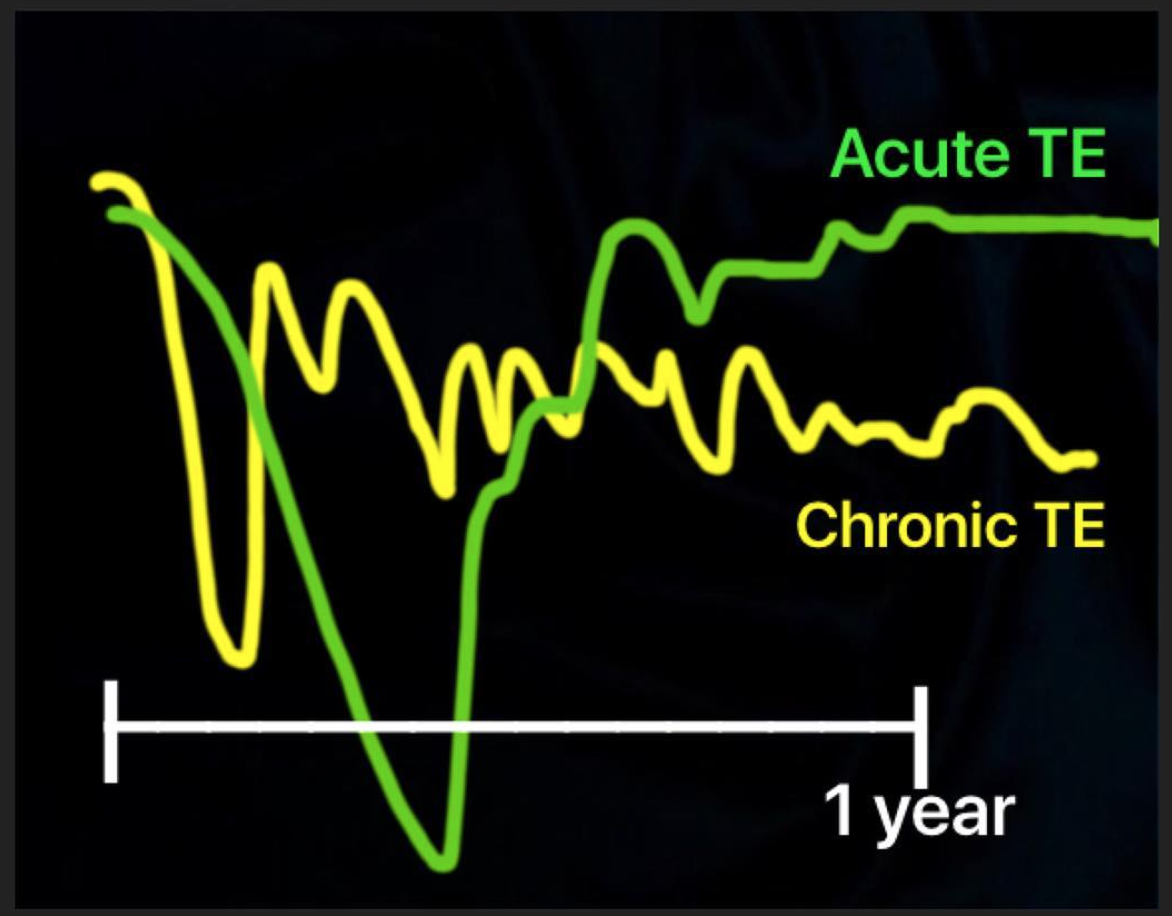Acute and Chronic Telogen Effluvium: How do they differ?
Acute and Chronic TE
There are two common types of telogen effluviums. Both lead to increased daily shedding.
Acute TE
Acute telogen effluvium (ATE) is associated with some type of "trigger" that then leads to massive shedding. Correction of the "trigger" can lead to resolution of the shedding and a return in density back to normal in 9-12 months. Common triggers include thyroid problems, dieting, medications, high stress, low iron and illness in the body.
Chronic TE
"Chronic" telogen effluvium (CTE) is often misdiagnosed and often mixed up with acute telogen effluvium. Chronic TE is associated with shedding too. The actual amount of hair shed is typically less than the worst possible cases of acute TE. CTE can be associated with a "trigger" but less commonly than acute TE. CTE does improve but then shedding occurs again - sometimes in a very unpredictable manner. Resolution can occur but it may take many years.
This graph shows how density typically changes over time in patients with acute and chronic effluviums.
This article was written by Dr. Jeff Donovan, a Canadian and US board certified dermatologist specializing exclusively in hair loss.

